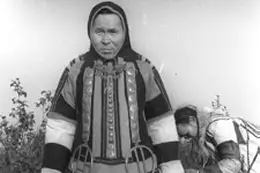Nganasan is a language of the Nganasan people based in Russia. The 2004 population census showed that 500 out of the existing 834 Nganasans had a good command of the language. Nganasan is a Samoyedic language with 2 main dialects. This includes the Avam dialect and the Vadeyev dialect. The Avam dialect has some sub-dialects. The differences between the Avam and Vadeyev dialect are based on differences in the pronunciation of words and differences in vocabularies. Nganasan speakers can also be found in Siberia.
The term Nganasan means ‘man’. As a result of the close contacts Nganasan has had with other languages such as Evenki, Nenets, Russian, Enets and Dolgan, the Nganasans can be able to speak these languages. Nganasan has loan words from the Nenets language and Russian. Due to the resettlement of the Nganasan people from the tundra to multi-ethnic villages in the 20th century, there have been shifts in the use of the language among its speakers. The generation that grew up in the tundra have a good knowledge of the language, while the generation that has been brought up in multi-ethnic villages tend to lean more towards speaking Russian rather than Nganasan. The younger generation is also less conversant with the traditional culture of its community. The older generation includes people who are 60 years and above. Consequently, the language is commonly used at home when speaking to elderly Nganasans. Currently, there are no monolingual speakers left.
Alternate names for the Nganasan language includes Nya and Tavgi Samoyed. The Nganasans have never had a written language. Two systems of writing were suggested in the 1990s. Both of these systems were based on the Cyrillic alphabet. This led to the successful publication of different written literature. This included a newspaper, dictionary, text books used in elementary schools and some folklore. N. Tereshchenko came up with a 41 alphabet system based on the Russian alphabet. However, there have been no recorded cases to show that this alphabet has ever been used anywhere. The Nganasan folklore is strongly based on songs and storytelling. Most Nganasans led a nomadic life until the 1930s.
